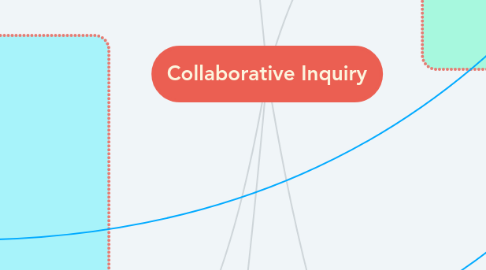
1. Constructionist view...basic elements of design are actions and design ability leads to intelligent decision about actions
2. Burning Questions
2.1. How does learner maturity impact problem solving?
2.2. How does a problem solvers cultural lens impact problem solving?
2.3. How Do We Build Solid Problem Solving Skills/Characteristics in our Learners?
3. Problem Solving
3.1. Type of Domains
3.1.1. Well Structured Domains (WSD)
3.1.1.1. Finite Concepts, Rules, Prinicples
3.1.1.2. Constrained Problem
3.1.2. Ill Structured Domains (ISD)
3.1.2.1. Typically Emergent
3.1.2.2. Encountered More Often in Professional Practice
3.1.2.3. Not Constrained by Classroom Content Domains
3.1.2.4. Solutions Not Predictable or Convergent
3.1.2.5. May Require Integration of Several Content Domains
3.2. Defining Problems
3.2.1. Mental Models/Creating Problem Space
3.2.2. Manipulating Problem Space
3.3. Problem Solvers
3.3.1. General Problem Solver Model
3.3.2. IDEAL Problem Solver Model
3.3.3. Simplified Problem Solver Model (Gick)
4. Problems
4.1. Internal Factors
4.1.1. Variations in the Problem Solvers
4.1.1.1. Familiarity
4.1.1.1.1. Experienced with Problem Type?
4.1.1.1.2. Not Experienced?
4.1.1.2. Domain and Structural Knowledge
4.1.1.2.1. How much does individual know about the domain?
4.1.1.3. Cognitive Controls
4.1.1.3.1. How does individual process and reason information?
4.1.1.4. Metacognition
4.1.1.4.1. Awareness - How does individual learn?
4.1.1.4.2. Driving Force in Problem Solving
4.1.1.5. Epistemological Beliefs
4.2. External Factors
4.2.1. Variations in Problem Type and Representation
4.2.1.1. Structuredness
4.2.1.1.1. Well Structured Problems
4.2.1.1.2. Ill-Structured Problems
4.2.1.2. Complexity
4.2.1.2.1. Number of Issues, Functions, Variables
4.2.1.2.2. Availability of Information
4.2.1.2.3. Reliability of Representation (components)
4.2.1.3. Domain Specificity
4.2.1.3.1. Problem Solving Activities are Dependent on Context/Domain
5. Schon’s Theory of Reflective Practice
5.1. Naming
5.1.1. name relevant issues
5.1.2. need to record and follow team communication
5.1.3. look at relevant objects in design task
5.2. Framing
5.2.1. frame the problem in a certain way
5.2.2. setting a context for further exploration
5.2.3. determine next activiites - what do we focus on while designing?
5.3. Moving
5.3.1. taking steps toward a solution
5.3.2. experimentataion: generating ides/making an inventory/sorting
5.3.3. combining or comparing ideas is movement
5.3.4. team tries to solve probelms/discenrs suitablity of the frame
5.3.5. use verbs!
5.4. Reflecting
5.4.1. reflect on moves and current frame
5.4.2. conscious and rational action that can lead to reframing the problem (when necessary)
5.4.3. contains a critical reflection on team's earlier actions
6. Burning Questions
6.1. How do we ensure we stay on course and not stall in one of the episode?
6.2. Team communication is integral, what happens when the team is not communicating well?
6.3. As an integrated approach, how can we ensure that all relevant issues are addressed (especially when working under tight timelines?
7. Burning Questions
7.1. After the framing, the research and the celebrating, how do we ensure implementation?
7.2. How to we acknowledge/measure success in implementation? How do we know?
7.3. What happens when goals for collaborative inquiry are not aligned?
8. Burning Questions
8.1. How do we keep teams motivated and committed to the process?
8.2. Where do we find the time and financial resources?
8.3. What makes a solid collaborative inquiry team?
9. Inquiry
9.1. Goals for Collaborative Inquiry
9.1.1. improve student acheivement
9.1.2. improve organizational processes
9.1.3. increase culture of reflective practice
9.1.4. strengthen teaching and learning
9.1.5. challenge thinking and practice
9.1.6. make better informed decisions
9.2. Types
9.2.1. Learning Forward Ontario - A Facilitators Guide
9.2.1.1. Stage One: Framing the Problem
9.2.1.2. Stage Two: Collecting Evidence
9.2.1.3. Stage Three: Analyzing Evidence
9.2.1.4. Stage Four: Celebrating and Sharing
9.2.2. Web Exploration
9.2.2.1. Development of ability to generate queries
9.2.2.2. Open Mindset (not fixed just precise fact findint
9.2.2.3. Improved Search Engines/Tools
10. Collaboration
10.1. Teams
10.1.1. Program Faculty/Administrative Staff
10.1.2. Student/Teacher
10.1.3. Faculty/Faculty
10.1.4. Student/Student
10.1.5. Faculty/Centre for Teaching and Learning
10.2. Meaningful Collaboration
10.2.1. Shared Vision
10.2.2. Respectful/Safe Environment
10.2.3. Clear Purpose/Goals
10.2.4. Team Commitment to Goal
